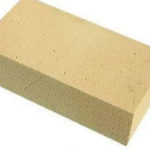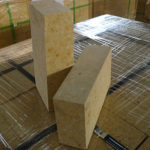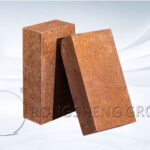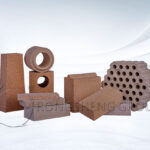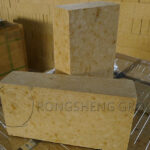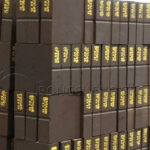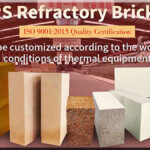Special-shaped refractory bricks are irregular in shape. Although they can be made into refractory bricks of different materials, they are difficult to make because of their weight or shape, which makes them difficult to form or burn.
Different Ways to Make Special-Shaped Refractory Bricks
Generally speaking, special-shaped refractory bricks are used at the nozzle, furnace door, pipeline or some irregular parts with steel parts. However, the number of special-shaped refractory bricks is not large, and it is difficult to shape them. Because of their small number, many manufacturers use manual or hydraulic methods to make them.
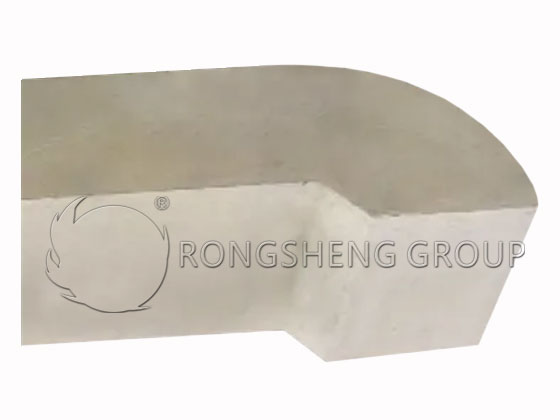
If the refractory bricks made of clay and high-alumina bricks weigh more than 100kg, the proportion of prefabrication is relatively high. Because the casting molding process is simple. For clay bricks and high-alumina special-shaped refractory bricks with small weight, it is necessary to control the water discharge. During the firing process, they can be fired together with standard bricks. If the free water and crystal water are not discharged completely, it is easy to burst during firing.
If the unit weight of the special-shaped refractory brick is small, it is made with wooden molds and extruded with steel molds. The cost of using steel molds is high, and it is not easy to shape. After drying, it must be sintered at a high temperature. The process in production process will be more labor-intensive and time-consuming than the commonly used standard bricks. Because the drying process in the middle has a long cycle. If the bricks are too heavy, they need to be fired, and the yield rate will be lower.
If the casting method is used, there will be no situation where it is difficult to shape or the firing yield rate is low. However, the drainage process of prefabricated bricks is long, and the production time needs to be controlled. In general, it is necessary to communicate with the user manufacturer about the use time, and it cannot delay the use.
If the special-shaped refractory bricks are made into magnesia refractory bricks, it is necessary to consider the control of the drainage process. Because magnesia refractory bricks are afraid of water, if the drainage process is not scientific, the finished product is easy to crack or explode. If you have to make it into magnesia refractory bricks, try to use the method of mechanical molding. If you use manual molding, the yield rate of magnesia special-shaped refractory bricks.
If you want to make it into silicon special-shaped refractory bricks, the mold needs to be placed, and the mold needs to be placed in a good ratio before the mold can be made. Otherwise, the finished product will be too large and cannot be used.
The reason why special-shaped refractory bricks are difficult to make is that the situation is different and the quantity is small. It depends on different situations. If the weight is small, it can be directly pressed by a machine. If the weight is too large, prefabrication can be selected. If you must use machine pressing and friction molding, you must make sure to make the mold size in advance.
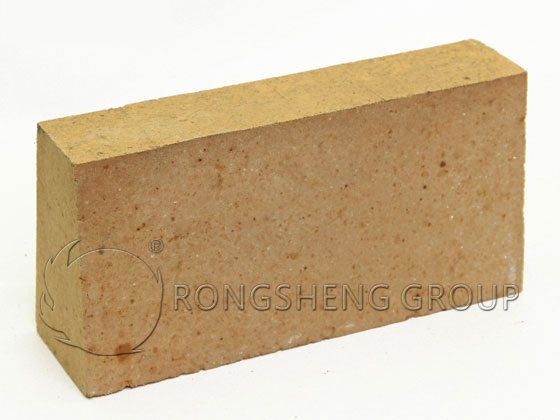
Production Method of Handmade Special-Shaped High-Alumina Bricks
Handmade special-shaped high-alumina bricks have various models, including general special-shaped, special-shaped, and super special-shaped.
In principle, bricks with more than 2 concave corners or more than 4 grooves, or weighing more than 100Kg are all handmade special-shaped bricks. These bricks cannot be formed by friction presses, but can only be formed by manual tamping and hydraulic press vibration.
Hand-made special-shaped bricks are not as fast as machine-made bricks. They are made according to the special shape of the use part, only for the shape of a certain part, the number of handmade special-shaped bricks is small, the production process is complicated and the cycle is long.
The number of handmade special-shaped high-alumina bricks is not large, and some even have only one piece. The production cost is increased due to the mold cost. The strength of special-shaped handmade bricks is slightly worse than that of mechanical products, but they are used in refractory brick masonry, but they are used when intersecting or cutting with other commonly used refractory bricks, and they are indispensable. Some manufacturers will replace them with amorphous castables due to the long use cycle. If it is a special high-temperature part, special-shaped handmade bricks will still be used. Because special-shaped bricks are fired at high temperatures, they are more fatigue-resistant.
Handmade special-shaped high-alumina bricks are made through batching, mold assembly, lubricant coating in the mold (high-quality lubricant is required. The consumption of lubricant should be small, and too much lubricant will increase the waste), ramming and molding, demolding, placing the brick blank upright, trimming and cutting the brick. Then it is dried to release water, and then sintered at high temperature. If the weight exceeds 300kg, the production time will be longer. The free water and crystal water of the special-shaped handmade high-alumina bricks must be fully discharged before high-temperature sintering. Otherwise, cracking will occur. The yield rate will decrease.
During the production process, the formed special-shaped handmade high-alumina bricks should be transported to the drying equipment in time. The drying time is longer than that of the high-alumina bricks formed by machine pressing, and finally fired through a high-temperature tunnel kiln.
There are fewer and fewer manufacturers of handmade special-shaped high-alumina bricks at present, because manual production consumes too much plant space and time, and the quantity is small. Because the cost of handmade special-shaped high-alumina bricks is too high, the production cycle is too long and the cost is too high. The current situation is to increase production through mechanized production, and castables are used for on-site casting of special parts.
However, some manufacturers still insist on using handmade special-shaped bricks in order to synchronize the use and replacement with other products of kiln lining. However, the production cycle must be calculated well to avoid delay in use.
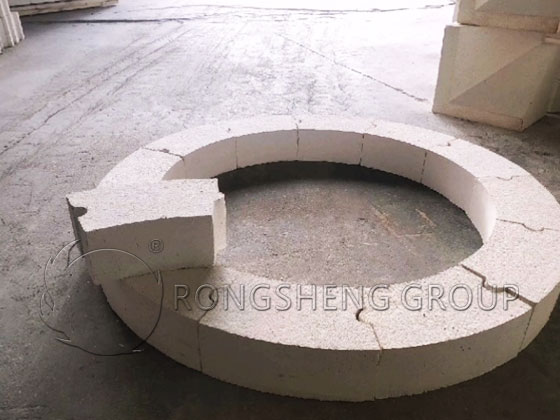
High-Aluminum Universal Arc Brick
High-aluminum universal arc brick is a kind of special-shaped brick. Universal arc brick is mainly used as the lining of steel barrel. In the past, it was mainly clay, but now it is gradually replaced by high-aluminum brick. The quality of high-aluminum universal arc brick mainly depends on the grade of high-aluminum brick. High-aluminum bricks are generally divided into three common grades: LZ-75, LZ-65, and LZ-55. The higher the aluminum content of high-aluminum universal arc brick, the better the quality.
Universal arc brick is mainly used in blast furnaces, electric furnaces, hot blast furnaces, thermal boilers, glass kilns, cement kilns, fertilizer gasification furnaces, casting and steel pouring bricks, etc.
High-aluminum universal arc refractory bricks have the following advantages:
- The service life of high-aluminum universal arc bricks is high, which is 210% higher than the clay products used before.
- The reduction in unit consumption can indicate that the non-metallic inclusions in the molten steel are reduced accordingly. The outstanding superiority of high-aluminum universal arc can be seen from the reduction in unit consumption.
- It has strong resistance to erosion by slag and molten steel, which can be clearly seen from the cross-section of high alumina bricks after use.
- Convenient construction. Universal arc refractory bricks have arcs at both ends. The arc can be adjusted by moving during construction, and the brick joints can generally reach 1 mm.
- The vertical brick joints of universal arc bricks are small, which corrects the erosion effect of the molten iron layer moving up and down and penetrating into the brick joints.
- Through the continuous innovation of refractory brick technology, the thickness of lining bricks is reduced, the capacity of steel drums is increased, and the utilization rate of steel drums is increased.
RS refractory brick manufacturer is a refractory brick manufacturer with rich experience in production and sales. RS manufacturer’s refractory brick products have been sold to more than 120 countries and regions around the world, such as South Africa, Chile, Egypt, Colombia, Uzbekistan, Italy, Indonesia, Ukraine, Hungary, Spain, Kenya, Syria, Zambia, Oman, Venezuela, India, Peru, the United States, Ethiopia, Iran, Iraq, Israel, etc. If you need customized, special-shaped refractory bricks, special-shaped high-alumina bricks, and other refractory brick products, please contact RS refractory brick manufacturers. Get free samples and quotes.

